Keynotes at DATE 2017
| Title | Design Automation in the Era of AI and IoT: Challenges and Pitfalls |
| Speaker | Arvind Krishna, Senior Vice President, Hybrid Cloud and Director, IBM Research |
Abstract
The AI and IoT revolutions are twin phenomena that are reshaping business models, industries, and society. If we are to maximize their potential, we must overcome significant technical challenges with the help of the Design Automation and Test Community.
First, new computer architectures are required to accelerate solutions driven by cognitive computing, the term given to a comprehensive set of AI capabilities that includes not just machine learning but also data ingestion, data privacy, learning, reasoning, natural language, and conversation. These architectures must support each of these new technologies and manage extreme, cognitive workloads marked by unprecedented volumes of structured and unstructured data. This challenge poses important questions for the Design Automation and Test community about what new approaches can be taken.
A similar challenge is inherent in the rapid development of IoT, where the span of computing architecture varies from extremely low power constraints, limited bandwidth, and sporadic access at the “edge” of the network to the nearly infinite power and compute of data centers. This raises the question of how to maximize the design and placement of IoT systems, which will have to function for extended periods of time (up to ten years or more, like a pacemaker). Unlike smartphones, these systems can't simply be disposed of, which raises significant security concerns.
In his talk exploring these challenges, Dr. Krishna will emphasize that solutions can only come from an integrated hardware-software co-design approach. He will also highlight some of the leading-edge technologies IBM Research is developing to drive further innovation in the computing stack as the era governed by Moore's law comes to a close.
Biography
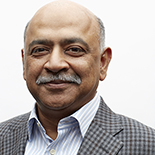 Arvind Krishna is Senior Vice President, Hybrid Cloud and Director, IBM Research. In this role, he helps guide the company's overall technical strategy in core and emerging technologies including cognitive computing, quantum computing, cloud platform services, data-driven solutions and blockchain. He oversees an organization of approximately 3,000 scientists and technologists in 12 labs across six continents.
Arvind Krishna is Senior Vice President, Hybrid Cloud and Director, IBM Research. In this role, he helps guide the company's overall technical strategy in core and emerging technologies including cognitive computing, quantum computing, cloud platform services, data-driven solutions and blockchain. He oversees an organization of approximately 3,000 scientists and technologists in 12 labs across six continents.
Previously, Arvind was general manager of IBM Systems and Technology Group's development and manufacturing organization, responsible for developing and engineering everything from advanced semiconductor materials to leading-edge microprocessors, servers and storage systems.
Earlier in his career, he was general manager of IBM Information Management and vice president of strategy for IBM Software. He has held several key technical roles in IBM Software and IBM Research, where he pioneered IBM's security software business. Arvind has an undergraduate degree from the Indian Institute of Technology, Kanpur, and a Ph.D. from the University of Illinois at Urbana-Champaign.
| Title | A New Era of Hardware Microservices in the Cloud |
| Speaker | Doug Burger, Microsoft Research, US |
Abstract
The Cloud is causing a major shift in both the business ecosystem and system infrastructures. The major hyperscale providers are building out highly-interconnected, worldwide computers at a scale that allows them to make significant first-party investments. This verticalization allows them to make cross-layer architectural changes more rapidly than would the old horizontal model. A second trend is the emergence of ultra-low latency requirements in the Cloud, moving storage, networking, and services from the millisecond to the microsecond regime. In this talk, I will describe how these architectural shifts are enabling the emergence of specialized hardware in datacenters, that enable services to be operated in the microsecond regime. On FPGAs, GPUs, and ASICs, these services can run with no CPU intervention, allowing much lower latencies and better cost structures than previously possible for key services such as deep learning. Over time this transition will enable a much broader collection of hardware IP to run at scale in the Cloud.
Biography
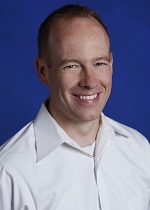 Doug Burger is a Distinguished Engineer at Microsoft, where he leads several projects aimed at transforming the computing architecture of Microsoft's systems and devices. With Derek Chiou, he co-leads the Catapult project, which is incorporating FPGA technology at large scale into Microsoft's cloud architecture. Before joining Microsoft in 2008, he served on the Computer Science faculty at the University of Texas at Austin for ten years, where he co-led the TRIPS project. He is the recipient of the 2006 Maurice Wilkes Award, an IEEE Fellow, an ACM Fellow, and an avid father.
Doug Burger is a Distinguished Engineer at Microsoft, where he leads several projects aimed at transforming the computing architecture of Microsoft's systems and devices. With Derek Chiou, he co-leads the Catapult project, which is incorporating FPGA technology at large scale into Microsoft's cloud architecture. Before joining Microsoft in 2008, he served on the Computer Science faculty at the University of Texas at Austin for ten years, where he co-led the TRIPS project. He is the recipient of the 2006 Maurice Wilkes Award, an IEEE Fellow, an ACM Fellow, and an avid father.
| Title | Precision Medicine: Where Engineering and Life Science meet |
| Speaker | Giovanni De Micheli, École Polytechnique Fédérale de Lausanne (EPFL), CH |
Abstract
As we witness the relentless growth of computing power, storage capacity and communication bandwidth, we also see a major trend in bio-medical sciences to become more quantitative and amenable to benefit from the support of electronic systems. Moreover, societal and economic needs push us to develop and adopt health-management approaches that are more effective, less expensive and flexible enough to be personalized to individual and community needs
Within this frame, precision medicine promises to better society by applying engineering technology to personalized health, with devices that are in/on the body and ubiquitously connected. Examples from the Swiss-wide Nano-Tera.ch program will show various techniques related remote patient monitoring, emergency care as well as routine care. These examples show the advantages that stem from organized and optimized means to quantify clinical data, handle large data sets as well as controlling and personalizing therapy and drug administration.
Biography
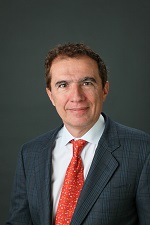
Giovanni De Micheli is Professor and Director of the Institute of Electrical Engineering at EPFL Lausanne, Switzerland. He is program leader of the Nano-Tera.ch program. Previously, he was Professor of Electrical Engineering at Stanford University. Prof. De Micheli is a Fellow of ACM and IEEE and a member of the Academia Europaea. His research interests include several aspects of design technologies for integrated circuits and systems, such as synthesis for emerging technologies, networks on chips and 3D integration. He is author of: Synthesis and Optimization of Digital Circuits, McGraw-Hill, 1994, co-author and/or co-editor of eight other books and of over 700 technical articles. His citation h-index is 89 according to Google Scholar. Prof. De Micheli is the recipient of the 2017 IEEE/CS Harry Goode award for seminal contributions to design and design tools of Networks on Chips, the 2017 EDAA Lifetime Achievement Award, the 2012 IEEE/CAS Mac Van Valkenburg award for contributions to theory, practice and experimentation in design methods and tools and the 2003 IEEE Emanuel Piore Award for contributions to computer-aided synthesis of digital systems.
| Title | Internet of Everything is our Opportunity |
| Speaker | Keith Willett, Director of Software Engineering for Merck Serono, US |
Abstract
Merck Serono is working to revolutionize patient care and doctor assist through utilization of technology that is built of the Internet of Everything. Using global resources to consolidate medical devices under a single platform that will store, analyze and recommend patient care to physicians, Merck is leveraging the Internet of Everything to improve patient care.
The IoE is not limited to medical devices, as everything from automobiles to light bulbs are looking for ways to connect to the Internet. These devices gather, store and analyze data to improve the user experience and create value for people and businesses that have yet to be recognized. However, connecting so many products will cause an increased strain on the network infrastructures, and most importantly expose personal information to potential threats; if not managed correctly. All companies connecting devices are having similar problems and are working to solve these issues.
As the Internet of Everything continues to evolve, critical strategies will need to be in place for all companies to be successful. This presentation will discuss the strategies companies need to play in this space and how collaboration and coopertition will become more common in IoE.
Biography
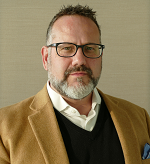
Keith Willett is the Director of Software Engineering for Merck Serono S.A. in Coinsins, Switzerland. Keith Willett is responsible for leading a revolutionary platform for the patient care portfolio at Merck Serono. This platform will utilize the Internet of Everything (IoE) to consolidate the drug delivery medical devices of Merck, into a single software platform. This platform will distribute medications to individual patients, gather, store and analyze the patient response to the medications, and recommend more effective treatments to the attending physician. Prior to his work with Merck Serono, Keith was the Director of Engineering Cisco International Switzerland, Keith's responsibilities were for the daily operations of the Ecublens site and development of wireless products in the Cisco portfolio. Keith and his team are working to ensure that all wireless devices can be securely connected into the Internet of Everything. Prior to Cisco, Keith worked for Honeywell as the Global Systems and Architecture Leader defining product architecture for $15B portfolio. Keith started his careers developing real-time operating systems for a large data communications company; in 1993. Through the years he took on progressive responsibilities in his career, and had the opportunity to work on a variety of products across multiple industries; data communications, telephony, threat detection, atmospheric robotics and building automation. He found the common element between all these products and systems was data communications; connecting anything, at anytime and anywhere.
| Title | The Engineering to Medicine Metamorphosis |
| Speaker | Sani R. Nassif, Radyalis LLC, US |
Abstract
We EDA engineers are justifiably proud of the tremendous success that integrated electronics has enjoyed over the last 50 years. After all the world has been irrevocably changed by the pervasive connectivity and computing capability we have enabled. Today's smart devices are just the beginning of an avalanche of "intelligence" that will be enabled by the internet of things and further change our lives for the better. But it can sometimes be difficult to explain to a layperson what part we have played in this narrative, somehow a 2% improvement in routing density or simulation accuracy sounds quite far from "the next iPhone". As technology slows down, matures, and the industry consolidates, we are presented with opportunities for applying our talents for the analysis, modeling, optimization and solution of difficult large scale problems in adjacent fields. This talk is about one such opportunity in the area of radiation therapy, where Medical Physicists work hand-in-hand with Oncologists to provide life-saving treatments for Cancer. Making the transition from EDA to Medicine required some significant sacrifices and humility -but the end result is a commercial and scientific success and a far greater level of relevance to people's lives.
Biography
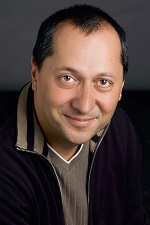 Sani received his Bachelors degree with Honors from the American University of Beirut in 1980, and his Masters and PhD degrees from Carnegie-Mellon University in 1981 and 1986 respectively. He then worked for ten years at Bell Laboratories in the general area of technology CAD, focusing on various aspects of design and technology coupling including device modeling, parameter extraction, worst case analysis, design optimization and circuit simulation. While at Bell Labs, working under Larry Nagel -the original author of Spice, he led a large team in the development of an in-house circuit simulator, named Celerity, which became the main circuit simulation tool at Bell Labs.
Sani received his Bachelors degree with Honors from the American University of Beirut in 1980, and his Masters and PhD degrees from Carnegie-Mellon University in 1981 and 1986 respectively. He then worked for ten years at Bell Laboratories in the general area of technology CAD, focusing on various aspects of design and technology coupling including device modeling, parameter extraction, worst case analysis, design optimization and circuit simulation. While at Bell Labs, working under Larry Nagel -the original author of Spice, he led a large team in the development of an in-house circuit simulator, named Celerity, which became the main circuit simulation tool at Bell Labs.
In January 1996, he joined the then newly formed IBM Austin Research Laboratory (ARL), which was founded with a specific focus on research for the support of IBM's Power computer systems. After twelve years of management, he stepped down to focus on technical work again with an emphasis on applying techniques developed in the VLSI-EDA area to IBM's Smarter Planet initiative.
In January 2014 Sani founded Radyalis, a company focused on applying VLSI-EDA techniques to the field of Cancer Radiation Therapy. In October 2015, Radyalis announced that it has closed a deal with LSI software to license its flagship Monte Carlo particle therapy simulator.
Sani has authored one book, many book chapters, and numerous conference and journal publications. He has delivered many tutorials at top conferences and has received Best Paper awards from TCAD, ICCAD, DAC, ISQED, ICCD and SEMICON, authored invited papers to ISSCC, IEDM, IRPS, ISLPED, HOTCHIPS, and CICC. He has given Keynote and Plenary presentations at Sasimi, ESSCIRC, BMAS, SISPAD, SEMICON, VLSI-SOC, PATMOS, NMI, ASAP, GLVLSI, TAU, and ISVLSI. He is an IEEE Fellow, was a member of the IBM Academy of Technology, a member of the ACM and the AAAS, and an IBM master inventor with more than 75 patents.
Dr. Nassif was the president of the IEEE Council on EDA (CEDA) for 2014 and 2015, was the General chair of the ICCAD conference in 2008, and has served on the technical program committees of ICCAD, DAC and other conferences. He received the Penrose award (given to one outstanding graduate from the American University of Beirut), the Distinguished Member of Technical Staff award from Bell Labs, three Research Accomplishment Awards from IBM, and the SRC Mahboob-Khan Outstanding Mentor awards from the SRC.
